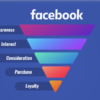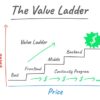Email Marketing
How To Build An Effective Business Model For Startups
How to Scale Your Startup: The Power of a Strong Business Model
If you’re ready to grow your startup, there’s one element you need to master: your business model.
While a business plan sets goals and strategies, a business model defines how you’ll make money from your products or services. It’s the foundation of sustainable growth.
In this guide, we’ll explore the basics of building a strong business model and what to do if it needs tweaking along the way. By the end, you’ll know how to create an effective model for your startup—and how to troubleshoot if it’s not delivering results.
Why Startups Need a Business Model
A business model describes how a company earns revenue. It covers who your customers are, what you offer, and how you’re compensated.
Without a solid business model, startups can struggle to grow. For example, many early viral apps failed not because they didn’t attract users, but because they didn’t have a way to monetize effectively.
Consider these examples:
1. Yo (2014-2016): A simple app for sending “yo” messages went viral, but its founder admitted his biggest mistake was not charging users from the start. Without revenue, funding dried up, and the app closed.
2. HQ Trivia (2017-2020): This live trivia app gained millions of players but struggled to solidify a profitable business model. Without stable revenue, it couldn’t survive when investors withdrew support.
3. Vine (2013-2016): Vine’s popular 6-second video platform attracted creators but lacked a way to monetize. With no path to profitability, Twitter eventually shut it down.
4. These examples highlight a simple truth: no business model means no sustainable business. Below, we’ll outline a straightforward approach to creating a solid business model for your startup.
A Simple Business Model Template
Scaling to millions in revenue is exciting, but it can be challenging without a clear business model. Here’s a simple template to guide you:
- Value Proposition: What are you offering, and who is it for? What makes it unique?
- Value Network: Who are your key partners in delivering this value?
- Revenue Model: How will you make money, and what cash flows are involved?
- Delivery Model: How will customers receive your product or service?
These four components form the core of a business model, keeping it simple yet powerful. Let’s see how successful companies have used different models based on their revenue strategy.
10 Profitable Business Models for Startups
Below are real-world examples of profitable business models used by successful startups:
1. ClickFunnels (Tiered Subscription): Offers a subscription model, with options for businesses of different sizes.
2. Netflix (Flat Subscription): Charges a flat monthly fee, giving users access to streaming content.
3. Amazon Web Services (Pay-Per-Use): Customers pay based on how much they use AWS’s cloud services.
4. Facebook (Advertising-Based): Users access Facebook for free, while businesses pay to advertise.
5. Airbnb (Commission-Based): Takes a percentage from both host and guest for each booking.
6. PayPal (Transaction Fee): Charges a fee for each transaction processed through its platform.
7. Etsy (Marketplace Fee): Sellers pay a listing fee, and Etsy takes a commission on each sale.
8. Microsoft (Licensing): Charges licensing fees for software, like Microsoft 365, per user or device.
9. Amazon Associates (Affiliate Marketing): Affiliates earn a commission by promoting Amazon products.
10. Spotify (Freemium): Offers free streaming with ads and a premium, ad-free option for subscribers.
Each of these models serves different needs but ultimately provides a path to profitability.
Should You Stick to Your Business Model?
After defining your business model, you may wonder how strictly you should follow it. Opinions vary:
- Flexible Models: Some founders believe that a business model can evolve as the business grows. Twitter, for example, focused on user engagement before worrying about revenue. This flexibility allowed Twitter to adapt over time, eventually selling for billions.
- Fixed Models: Others, like Amazon’s Jeff Bezos, planned every detail of their business model early on. Bezos focused on a marketplace approach that allowed Amazon to scale steadily, only expanding once they validated their initial model.
The ideal approach combines both: commit to a model but stay open to pivoting if needed.
How ClickFunnels Helps Startups Stay Flexible
ClickFunnels is an excellent tool for startups that need flexibility as they refine their business model. Here’s why:
- Rapid Funnel Creation: Set up sales funnels quickly to test different revenue approaches.
- A/B Testing: Test different pricing models and offers to find what resonates.
- Customizable Payment Options: Easily switch between subscription, one-time payment, or pay-per-use models.
- Integrated Marketing: Adjust email marketing as you change your model.
- Analytics Dashboard: Measure performance in real-time to see what works.
With ClickFunnels, you can try new approaches without major disruption, making it perfect for early-stage businesses.
Try ClickFunnels free for 14 days to see how it can support your business model.
Final Thoughts
Building a startup without a business model is like driving blindfolded. A business model gives you direction, focus, and a way to make money.
We’ve covered a powerful template to create your model, and we’ve explored real-world examples to illustrate different strategies. Remember, a business model isn’t set in stone—successful companies constantly refine and adjust their models.
With tools like ClickFunnels, you can experiment and adapt your model as needed, keeping your startup on the path to sustainable growth.
>>>Join The One Funnel Away Challenge<<<






























